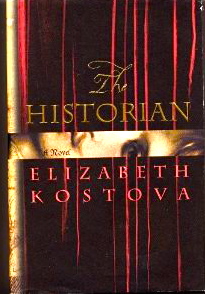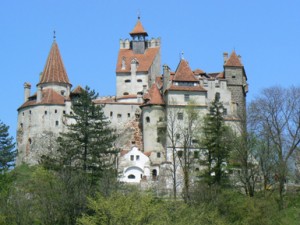“I vowed to make history, not to be its victim.”
 Author Elizabeth Kostova’s unusual debut novel combines her ten years of scholarly research on Vlad Tepes, the Impaler of Wallachia, sometimes known as Drakulya, with the stories that have become part of local folklore in Bulgaria and Rumania, and the legends created and perpetuated by Bram Stoker (in his novel Dracula). A sadistic prince from the mid-fifteenth century who killed up to 15,000 of his own people, often impaling them on stakes and leaving them to die horrible deaths, Vlad terrified his enemies from the Ottoman Empire, though it was Stoker who created the belief that he was a vampire.
Author Elizabeth Kostova’s unusual debut novel combines her ten years of scholarly research on Vlad Tepes, the Impaler of Wallachia, sometimes known as Drakulya, with the stories that have become part of local folklore in Bulgaria and Rumania, and the legends created and perpetuated by Bram Stoker (in his novel Dracula). A sadistic prince from the mid-fifteenth century who killed up to 15,000 of his own people, often impaling them on stakes and leaving them to die horrible deaths, Vlad terrified his enemies from the Ottoman Empire, though it was Stoker who created the belief that he was a vampire.
Three people from the twentieth century, all of whom have studied Drakulya and his history, tell interlocking stories here through letters, archived research documents, scholarly lectures, and their own experiences. All believe that Drakulya still walks the earth, selecting his acolytes and spreading his evil through bites on the neck, which leave them “undead.” As these characters tell their stories in alternating scenes from different time periods, they travel widely, often to libraries and universities, searching for clues about Drakulya, whom they believe is connected to recent disappearances and deaths.

Historians and scholars will be fascinated by the detailed information revealed in this novel as the three main characters uncover key information about Vlad/Drakulya. The characters’ trips to Rumania, Hungary, and Bulgaria, then under Communist rule, provide fascinating glimpses of Eastern Bloc life, both in the cities and in the countryside, and scenes which are set in archives and libraries show the excitement of the scholar on the track of important information. Travels to remote, previously uninvestigated sites connected with Vlad suggest the intriguing nature of field work. The plot is used primarily as a framework which allows the author to disclose the historical Vlad, revealing information slowly as mysteries begin to be solved.
Th ose looking for a fast-paced blood-and-gore thriller may be disappointed by the author’s serious approach. Though the story is often exciting—and has a conclusion which packs a wallop–the characters themselves are undeveloped, and the constant shifting of location as the points of view change makes the stories difficult to follow, at times. Foreshadowing is often obvious, and the use melodramatic elements is sometimes unnecessary and intrusive–a gypsy curse, ghostly appearances in a photograph, feelings of “presences,” convenient letters and postcards, and frequent use of coincidence. At almost seven hundred pages, the story sometimes lags because the dramatic tension cannot be maintained when the focus shifts suddenly from action to research. A unique and fascinating story, filled with odd occurrences, this is an interesting combination of scholarship and legend, a debut novel from an author with a promising future.
ose looking for a fast-paced blood-and-gore thriller may be disappointed by the author’s serious approach. Though the story is often exciting—and has a conclusion which packs a wallop–the characters themselves are undeveloped, and the constant shifting of location as the points of view change makes the stories difficult to follow, at times. Foreshadowing is often obvious, and the use melodramatic elements is sometimes unnecessary and intrusive–a gypsy curse, ghostly appearances in a photograph, feelings of “presences,” convenient letters and postcards, and frequent use of coincidence. At almost seven hundred pages, the story sometimes lags because the dramatic tension cannot be maintained when the focus shifts suddenly from action to research. A unique and fascinating story, filled with odd occurrences, this is an interesting combination of scholarship and legend, a debut novel from an author with a promising future.
Notes: The author’s photo appears on http://www.thestar.com
Drakula’s Castle is for sale: For information and the photo, see: http://www.seenonrealestate.com
